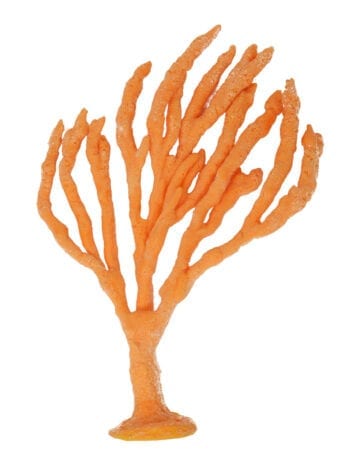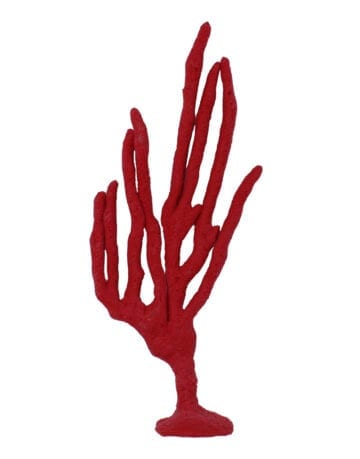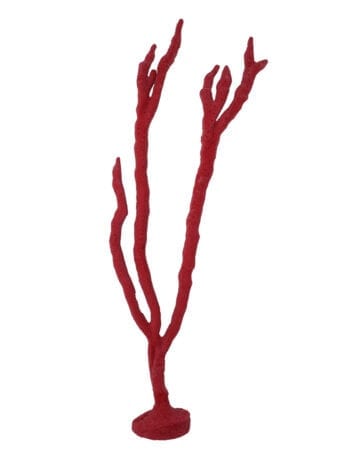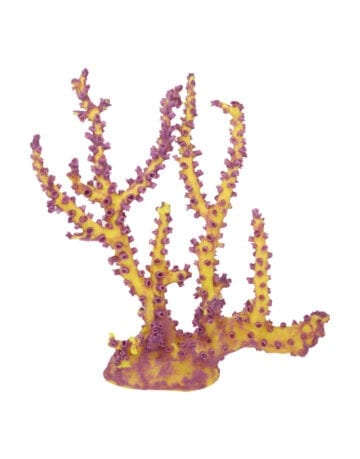Octopus Coral 129
$72.78
The colonies of T. micranthus grow in bushy or tree-like colonies, up to 1 m tall (Schumacher 1984). At their only known introduced location, on an oil platform off Louisiana, colonies were only about 0.5 m tall, probably because they were still young (Sammarco et al. 2010). Branches can be 1-3 cm thick, and are usually oriented perpendicular to the current (Schumacher 1984). Size and calcification of colonies varies greatly in the Indo-Pacific, varying with environment, but also possibly indicating cryptic species
Our coral replicas are molded from the original coral to preserve the realistic shape and texture of the coral. Octopus Coral is an azooxanthellate coral (lacking symbiotic algae), which grows in colonies consisting of clumps of calcareous cups, projecting from a spongy calcareous base. The corallites (calcareous wall around a single polyp) flare outward, and project in a loosely branching fashion. The calyx (mouth region) is 6-8 mm in diameter, smaller than that of T. coccinea. The corallite skeleton is white, with poorly defined ribs stony coral. The interior of the corallite is partly divided by septa, projecting into the body cavity- there are four kinds of septa, of varying width which are arranged in cycles around the opening of the corallite. There are 48 septa. The septa do not protrude on the exterior of the corallite. There is a prominent columella – a projection of the skeleton in the center of the corallite. The body of the polyp itself is black or dark-green, and the tentacles are also usually black or green, but sometimes gray. Octopus Coral is a coral which grows in bush or tree-like colonies (up to 1 m in diameter), and is capable of forming reefs. Polyps reproduce asexually by budding from the base, or from the oral disk, to produce new polyps, which secrete their own calcareous skeletons. The reproductive biology of the planulae of this species is not known. reef aquaria. However, its congener, T. coccinea, is hermaphroditic, and releases sperm into the water. Eggs and the developing planula larvae are brooded. Planulae of T. coccinea can also be produced asexually. The larvae of T. coccinea can be competent for up to 100 days. It is unclear to what extent these features apply to T. micranthus. Each head of coral is formed by a colony of genetically identical polyps which secrete calcium carbonate that make up their hard skeleton. species
| Weight | 1.439375 lbs |
|---|---|
| Dimensions | 13 × 8 × 9 in |
| Color | Blue/Yellow, Olive |
Only logged in customers who have purchased this product may leave a review.








There are no reviews yet.